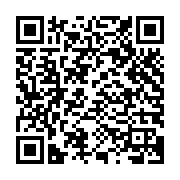WORLD WAR TWO JAPANESE INVASION MONEY - DUTCH EAST INDIES GULDEN
c. 1942Small rectangle with brown print and text on both sides. Front of note has image of bread fruit trees on each side of the main text, as well as a brown coloured scroll work border. In centre of note, under the text is a green circle with circular tribal style pattern, surrounding a five sided shape with a fine net style pattern. In the bottom border of note is a bar with seven Japanese symbols within.
Text in the centre of the note reads [DE/JAPANSCHE/REGEERING/ BETAALT AAN TOONDER/ EEN GULDEN] with text [SI] blank ink stamped at the corners of last line of text. On each side of the note in the lower corner is the numeral 1, and at the sides central edge is a numeral 1 surrounded by a frame. Near the lower left numeral 1 is a small circle design with Japanese symbols in the centre.
Back of note has rectangle design with net style pattern behind numerals, with eight numeral ones of various sizes. One located in the centre of the note, one in each corner, one on each side of centre design and one above central numeral that is within a rectangle frame. Feint crease mark is located in centre of note vertically.
In January 1942, the Japanese army began its attacks on the Dutch East Indies, with the Dutch colonial government surrendering in March 1942. The Japanese took control of the economy and began issuing banknotes for use in the occupied territories. Although it formally kept the gulden name, local people referred to the money as oeang Djepand (Japanese money) or oeang pisang (banana money due to the bananas on the ten gulden note)
In March 1943, the Japanese occupation government ceased issuing gulden notes, and due to the previous overprinting of notes inflation occurred. In 1944, the Japanese government renamed the invasion money from gulden to roepiah.
This note was collected as a souvenir by Bernard Beltz who served in the Australian Navy during World War II. When serving on HMS Bataan towards the end of the war he visited the Phillipines and was in Tokyo for the official surrender of Japan
Details
Details
[DE/JAPANSCHE/REGEERING/ BETAALT AAN TOONDER/ EEN GULDEN]
MEDIUM
Bank note was souvenir by Bernard Lewis Beltz, a member of the Australian Navy during World War II who was a stoker on HMS Bataan, a tribal class destroyer. HMS Bataan was in the Philippines in July 1945 and from there travelled to Tokyo, arriving on the 31st August 1945 to take part in the Japanese surrender ceremony which took part on 2nd September 1945.
City of Armadale - History House
City of Armadale - History House
Other items from City of Armadale - History House
- AUSTRALIAN COMFORTS FUND - CRIBBAGE BOARD
- MACKINTOSH TOFFEE TIN
- MUSIC SHEETS AND INSTRUCTIONS - THE AUSTRAL SCHOOL OF MUSIC
- ENVELOPES - THE AUSTRAL SCHOOL OF MUSIC
- ONE PENNY STAMPS - AUSTRALIAN
- UNIFORM - BROWNIES
- SCARF - BROWNIES
- SECRETARY'S BRIEF BOX- ROTARY CLUB OF NEERIGEN BROOK
- MUG - ARMADALE - NEERIGEN BROOK ROTARY CLUB
- BADGE - ARMADALE-NEERIGEN BROOK ROTARY CLUB
- CLASP - ARMADALE-NEERIGEN ROTARY CLUB BADGE
- BADGE - ROTARY INTERNATIONAL 100 YEARS OF SERVICE
